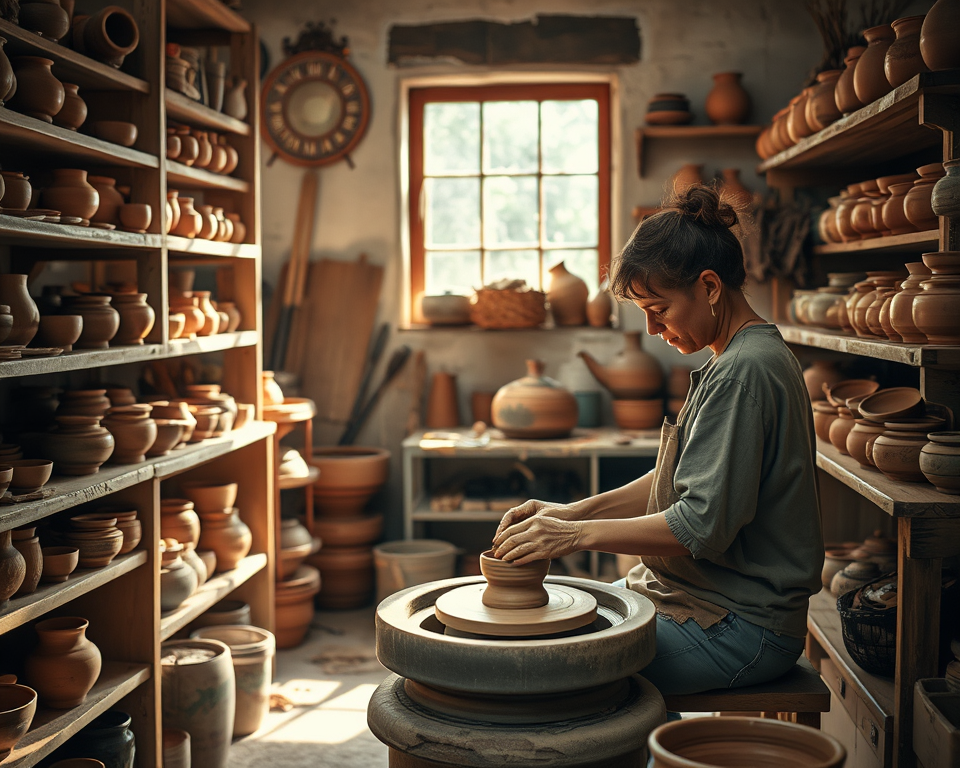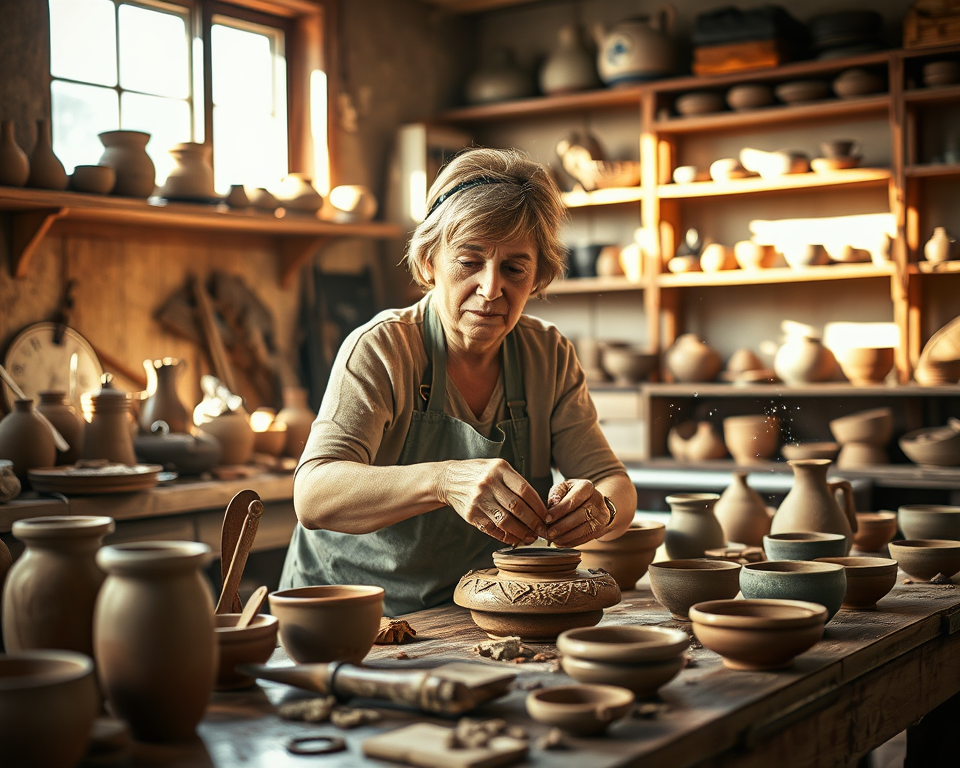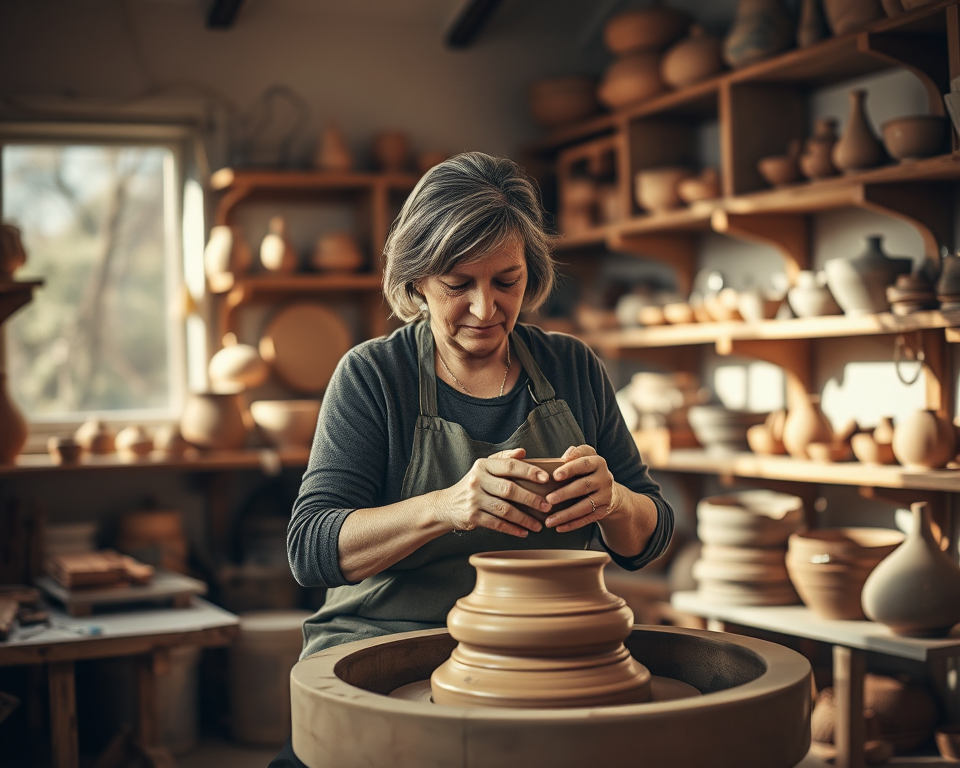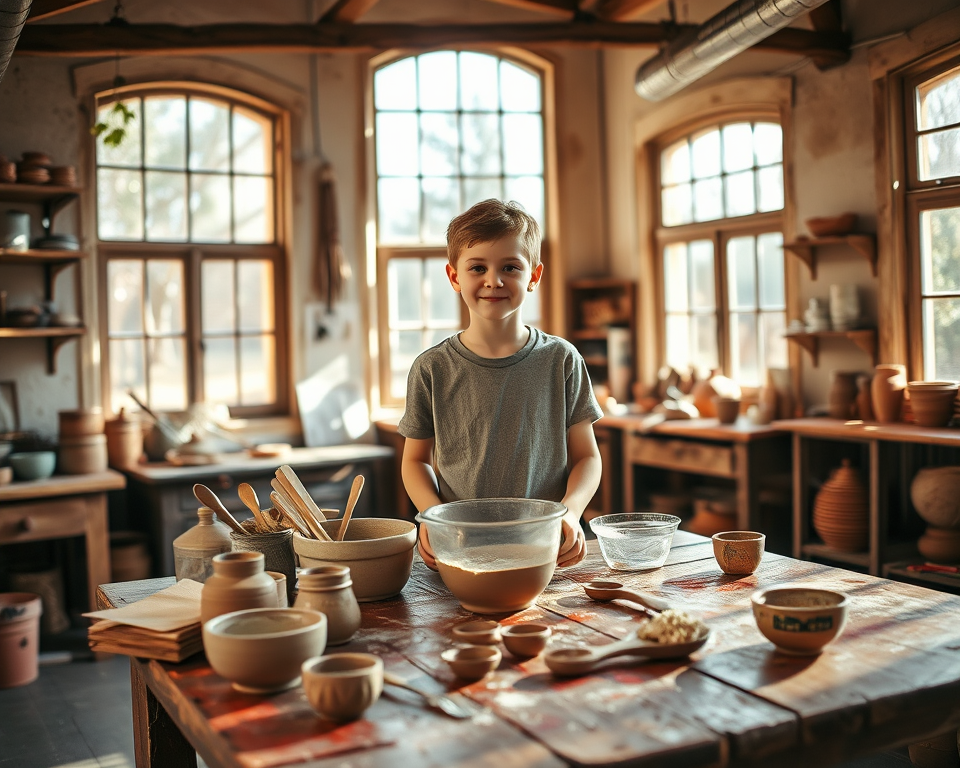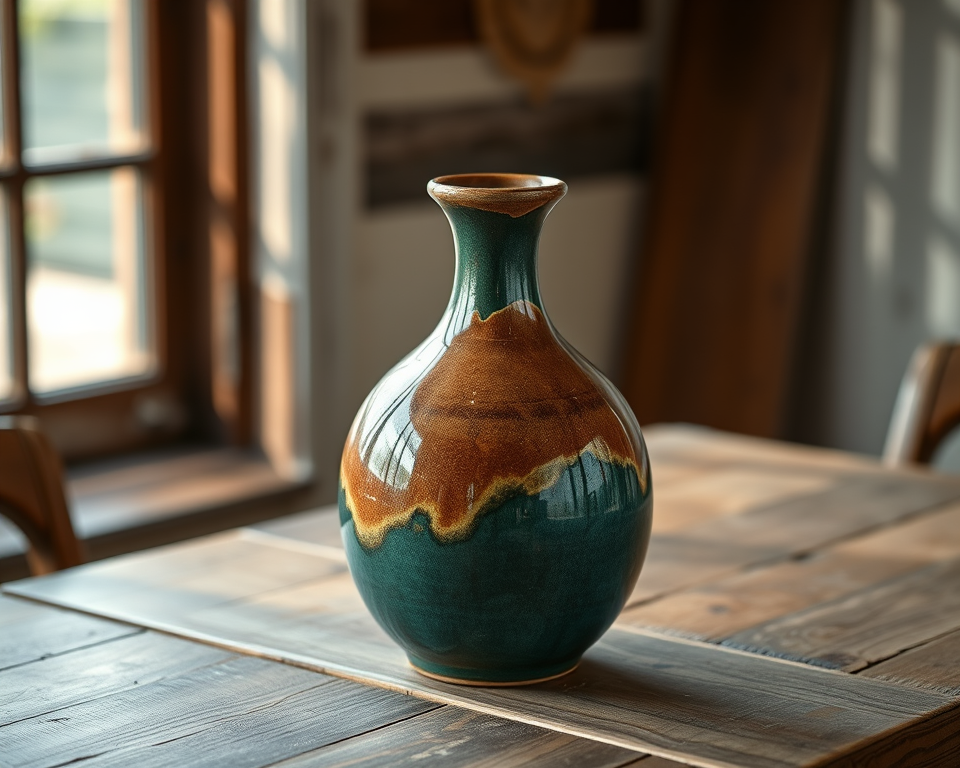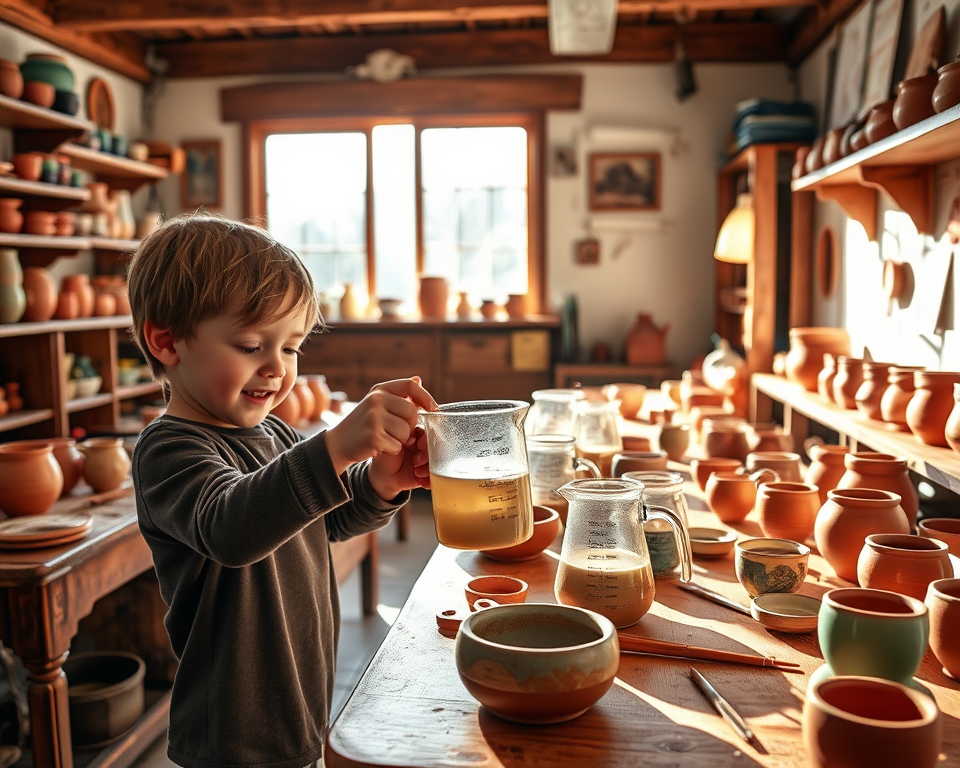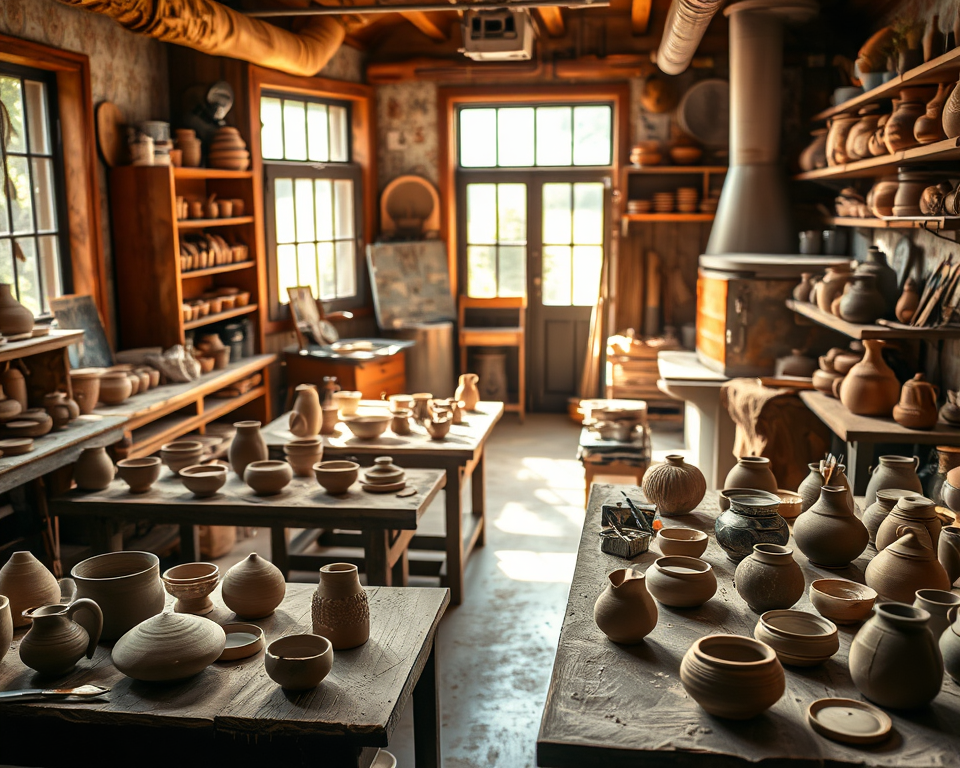Alright, let’s dive into the world of measurements, especially since you’re into pottery, which often needs precise amounts of materials! First, let’s understand what we’re converting. We want to change 0.25 milliliters (mL) into teaspoons (tsp). In simple terms, this means we want to find out how much 0.25 mL is when we think about
Author: Lila Emerson
Hi, I’m Lila! I’ve been captivated by the art of pottery for as long as I can remember. From the moment I first touched clay, I knew I had found my passion. Through my website, CraftedInClay.com, I share my love for pottery, offering tutorials, tips, and inspiration for anyone eager to discover, learn, and master the art of pottery. Whether you're a beginner or a seasoned artist, I’m here to help you shape your creative vision into something beautiful!
Starting Pottery? Skills You Need to Succeed in Clay
I remember the first time I sat at a pottery wheel. The clay felt cool and slippery in my hands, and I could hardly believe I was about to shape something tangible from this messy lump. You might be thinking about starting pottery too, wondering if it’ll be too tough or if you even have
0.75 teaspoons (tsp) to cups (US)
Okay, let’s dive into some fun measurements! You know how when you’re making pottery, sometimes you need to mix different materials to get the right texture? Well, it’s super important to measure things precisely! When we talk about teaspoons and cups, we’re talking about how much stuff we can fit in a container. A teaspoon
2 cups to fluid ounces (fl oz)
Hey there! Let’s talk about measurements—something super important, especially when you’re working with clay and making awesome pottery! In cooking or mixing materials, we often need to know how much we are using. One very common way to measure liquids is by using cups and fluid ounces. Now, here’s something cool to remember: 1 cup
Troubleshooting Pottery: Stop Leaks in Their Tracks!
Let’s talk about pottery—your beautiful creations, those one-of-a-kind pieces that tell a story, and how frustrating it can be when you find them leaking! You’ve poured your heart into making that stunning bowl or vase, only to discover it’s not holding water. Trust me; I’ve been there, and it can feel like a betrayal from
15 tablespoons (tbsp) to milliliters (mL)
Hey there, young potter! Today, we’re going to talk about how to measure ingredients for your pottery projects, especially when you need to mix some cool stuff together. We have something called tablespoons, which is a way to measure liquids. But sometimes, you might need to think in terms of milliliters (or mL for short)
What Your Pottery’s Ping Says About Its Quality
There’s something so captivating about pottery, isn’t there? You can feel the authenticity of handmade pieces, the stories they tell, and how they reflect the artistry behind them. But have you ever noticed that some pottery pings while others don’t? It might seem trivial, but trust me, that sound can say a whole lot about
12 fluid ounces (fl oz) to cups (US)
Hey there, young potter! Today, we’re going to talk about measurements. You know when we mix our clay and water together, we always want to get the right amounts so our pottery turns out just right? Well, in cooking and baking, we also use measurements like fluid ounces and cups. Now, let’s understand how fluid
1.75 gallons to quarts (US)
Hey there, young pottery enthusiast! 🌟 Today, we’re going to learn about measurements and how gallons and quarts are connected. When we talk about gallons and quarts, we’re discussing how we can measure liquids. Imagine you have a big pot that can hold 1.75 gallons of water. That’s a lot of water! But sometimes, we
Obvara Firing (Cone 06 to °F)
Hey there! Let’s talk about something super cool in the world of pottery called Obvara firing. It’s a special way to finish your pottery pieces so they look amazing and can be used for everyday things. But first, let’s break down what we mean by Cone 06 and temperatures in degrees Fahrenheit (°F). In pottery,

